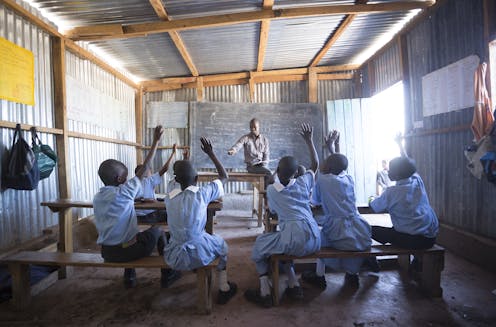
In most parts of the world, girls outperform boys in reading. Girls are more likely to read at or above the expected level of proficiency for their grade compared to boys.
There are several reasons for this. Girls have been found to have more natural aptitude for and interest in reading than boys; they tend to read more; and they are more likely than boys to be encouraged to read.
But assessments in sub-Saharan Africa have found that the trend is reversed in some countries in the region.
The anomaly in sub-Saharan Africa suggests that girls in these countries may encounter obstacles to their educational participation and reading development. As a social demographer interested in learning outcomes in the region, I wanted to delve deeper into the data and try to understand what those obstacles might be. Sustainable Development Goal 4, which relates to equity and inclusion in education, highlights how important it is to eliminate gender disparities in learning.
In a recent study, I examined data from 15 African countries in the continent’s southern and eastern regions, including Botswana, Malawi, Kenya, and Uganda. I found that boys outperformed girls in six of those countries.
Then I investigated what might correlate with these disparities, again by sifting through data. I identified the following factors: inadequate school sanitation; domestic and care-giving responsibilities; and harassment and bullying at school. All of these may lead to absenteeism or hinder girls’ ability to learn even when they’re present at school.
This suggests that improving school sanitation, reducing household chores, and addressing harassment and bullying could enhance girls’ reading performance relative to boys’.
The data
The study examined data from 61,396 Primary 6 pupils (aged on average 13 years) in 15 African countries. The data came from the third evaluation by the Southern and Eastern Africa Consortium for Monitoring Educational Quality, conducted from 2009 to 2011.
The evaluation collected a variety of information on the school environment and resources, teacher characteristics and pupil family background. The information was collected from head teachers, subject teachers and pupils.
It’s well documented that girls in sub-Saharan Africa face a number of challenges which affect enrolment and progression through school. These include cultural practices that undervalue female education, such as early marriage, less academic support from parents and teachers than is offered to boys, and sexual harassment. Concerns about safety and sanitation play a role too as parents are more reluctant to send girls to schools when they are concerned about them travelling long distances or experiencing violence in school. The burden of household chores also plays a part.
My analysis suggests that some of these factors may be holding girls back in terms of reading performance in the six countries where they were significantly outperformed by boys.
Lessons to be learned
Of course these issues are not unique to those six countries. My findings further suggest that even for some countries where the picture is more equal or girls perform better than boys, as expected, these factors reduced the size of the advantage of girls relative to boys.
Girls significantly outperformed boys in eight out of the 15 countries (the difference was not statistically significant in one other). These countries on average had relatively higher school quality than those where boys outperformed girls. School quality is measured using the presence and standard of resources such as libraries, staff rooms, drinking water, electricity, and computers.
So, the better the overall school system, the better girls are likely to perform – even when other factors that put girls at a disadvantage come into play.
Also, the percentage of P6 pupils who had attended preschool tended to be higher in countries with a female advantage. This supports the considerable existing evidence about the long-term benefits of early childhood education for both girls and boys.
Girls also performed better when more of their classmates, their head teachers and their reading teachers were female. This suggests that increasing the presence of female peers and role models could improve girls’ learning outcomes.
Addressing the gender gap
Ensuring that schools offer a secure and nurturing environment for girls’ education is crucial. It is equally important for families to support consistent school attendance by minimising girls’ care-giving responsibilities and household chores that may interfere with their educational pursuits.
Pearl S. Kyei does not work for, consult, own shares in or receive funding from any company or organisation that would benefit from this article, and has disclosed no relevant affiliations beyond their academic appointment.
This article was originally published on The Conversation. Read the original article.







